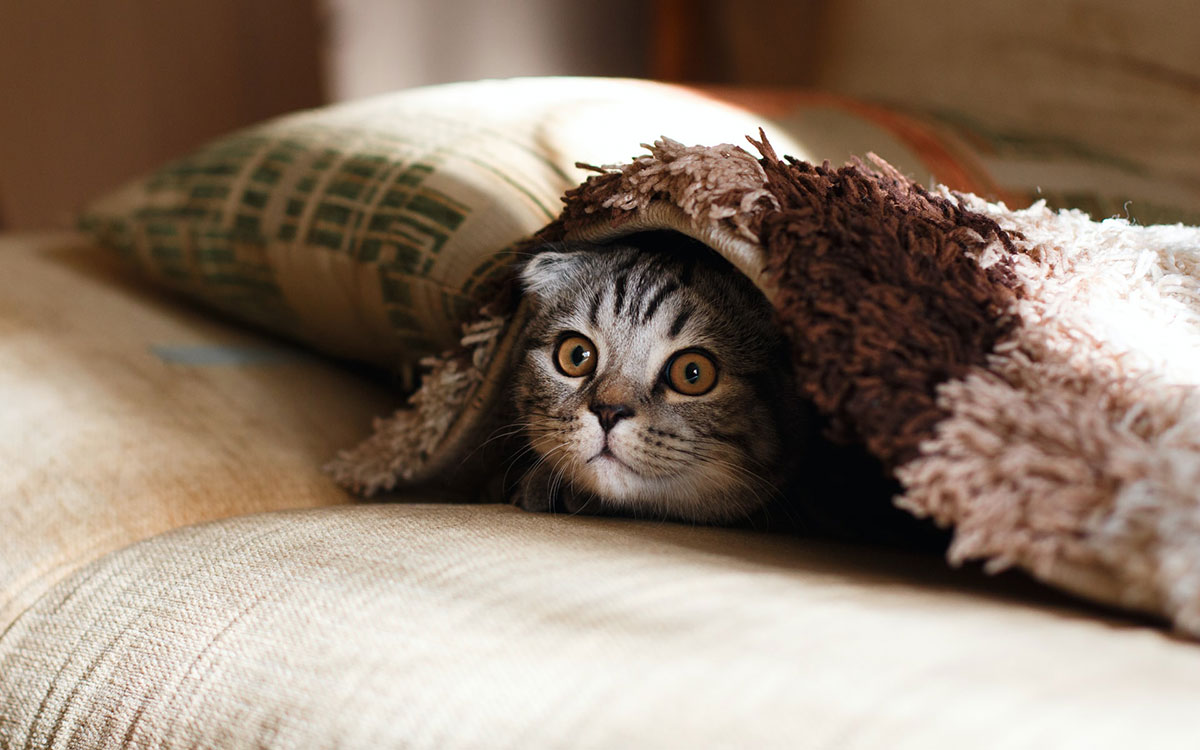More and more cats are developing diabetes, but you can manage it through natural methods.
Understanding natural methods is vital for your cat’s health. This guide will help you explore practical ways to support your feline friend. Natural management can include diet changes, exercise, and herbal remedies. These approaches may improve your cat’s quality of life.
They aim to control blood sugar levels gently. This guide is perfect for those new to these methods. It offers practical advice and easy steps. You’ll learn how to make positive changes. These can lead to better health for your cat. Start your journey towards managing cat diabetes naturally today. Your furry companion deserves the best care possible.
Introduction To Cat Diabetes
Welcome to a beginner’s guide on managing cat diabetes naturally. If your furry friend has been diagnosed with diabetes, it might feel overwhelming. Understanding the basics can empower you to make informed decisions for your pet’s health. Let’s dive into what cat diabetes is and how you can manage it effectively.
Causes Of Feline Diabetes
Feline diabetes often stems from obesity and a sedentary lifestyle. Cats that are overweight have a higher risk of developing insulin resistance. Diet also plays a crucial role. Foods high in carbohydrates can contribute to the condition.
Age and genetics are other factors that can influence the onset of diabetes in cats. Older cats, particularly those over seven years old, are more susceptible. Certain breeds, like Burmese cats, also show a higher prevalence. Have you considered your cat’s dietary and activity habits?
Symptoms To Watch For
Recognizing the symptoms early can make a significant difference in managing cat diabetes. Increased thirst and urination are common signs. You might notice your cat drinking more water than usual and needing to use the litter box more frequently.
Weight loss, despite a good appetite, is another red flag. If your cat is eating well but still losing weight, it might be time to consult a vet. Lethargy and a dull coat can also indicate diabetes. Keep an eye on your cat’s energy levels and coat condition.
Have you observed any of these signs in your cat? Early detection can lead to more successful management of the condition.
Natural Dietary Changes
Managing cat diabetes naturally involves dietary changes. Opt for high-protein, low-carbohydrate meals. Fresh, balanced ingredients can help stabilize blood sugar levels.
Managing cat diabetes naturally can feel overwhelming, but making dietary changes is a great place to start. Simple adjustments to your cat’s diet can significantly impact their health and well-being. You’ll find that these changes are not only beneficial for managing diabetes but also contribute to your cat’s overall vitality.
Low-Carb Diet Benefits
Switching to a low-carb diet can be a game-changer for diabetic cats. Cats are obligate carnivores, meaning they thrive on protein rather than carbohydrates. High-carb foods can lead to spikes in blood sugar, which is precisely what you want to avoid. Consider how a low-carb diet might help stabilize your cat’s blood sugar levels. Some cat owners have noticed their pets becoming more energetic and playful after reducing carbs. Could this simple change make your cat feel younger and more vibrant?
Choosing The Right Cat Food
Finding the right cat food is crucial for your diabetic cat’s health. Look for foods that list meat as the primary ingredient, avoiding fillers like corn or wheat. Wet food is often better than dry food, as it typically contains fewer carbohydrates. Read labels carefully. You might be surprised by how many “healthy” options are packed with carbs. Have you checked the ingredient list on your cat’s current food? Explore options available at your local pet store or online, and don’t hesitate to ask for samples. Some brands even offer formulas specifically designed for diabetic cats. What changes can you make today to ensure your cat gets the best nutrition possible?
Read More: Top 7 Vet-Recommended Diabetic Cat Foods in 2025: Best Picks
Importance Of Regular Exercise
Regular exercise plays a vital role in managing cat diabetes. It helps maintain a healthy weight and improves insulin sensitivity. Exercise also boosts your cat’s mood and overall well-being. Engaging your cat in physical activities can prevent complications and enhance their quality of life.
Encouraging Playtime
Playtime is essential for your cat’s physical and mental health. Create a stimulating environment to encourage movement and curiosity. Use toys that mimic prey, like feather wands or laser pointers. These can stimulate their natural hunting instincts. Set aside dedicated time each day for interactive play. This not only helps with exercise but also strengthens your bond.
Exercise Tips For Indoor Cats
Indoor cats need creative solutions for exercise. Rearrange furniture to create climbing opportunities. Install cat trees or shelves for vertical exploration. Rotate toys to keep them interesting and engaging. Introduce puzzle feeders to make mealtime more active. Encourage your cat to chase and pounce during feeding. This combines nourishment with necessary physical activity.
Herbal Remedies
Explore natural ways to manage cat diabetes through herbal remedies. These gentle solutions can help balance blood sugar levels. A beginner’s guide to herbs offers effective options for supporting your cat’s health.
Managing your cat’s diabetes can be daunting, but it’s encouraging to know that herbal remedies may offer a natural way to support their health. Herbal treatments have been a part of traditional medicine for centuries, and many pet owners are now looking to these natural solutions as they seek alternative approaches to care for their furry friends.
Herbs To Consider
When considering herbal remedies for your cat’s diabetes, a few herbs stand out. Fenugreek is known for its potential to help regulate blood sugar levels. You might have heard of it being used in human diets, but it can benefit cats when used correctly. Another herb to keep in mind is Gymnema Sylvestre. Experts recognize its ability to reduce sugar absorption and improve insulin function. Using these herbs can be a proactive step in managing your cat’s diabetes naturally. You might be wondering if herbs like Cinnamon could be helpful. Some pet owners report positive effects, but it’s essential to use it appropriately to avoid any adverse reactions.
Safety Precautions
Before you rush into herbal treatments, there are critical safety precautions to consider. Always consult your vet before introducing any herbs into your cat’s diet. Your vet can help you determine the correct dosage and ensure it’s safe for your cat’s health. It’s easy to think that because something is natural, it’s entirely secure. However, every cat is different; some may have sensitivities or allergies. Ensure you monitor your cat closely for any changes in behavior or health when you start a new herbal regimen.
Additionally, it is crucial to source herbs from reputable suppliers. Poor-quality herbs can be contaminated or ineffective. Have you ever considered how minor contaminants could affect your cat’s health? It’s a reminder that quality matters significantly.
Herbal remedies can be a promising addition to your cat’s diabetes management plan. By carefully selecting herbs and taking necessary precautions, you can support your cat’s health naturally and effectively.
Monitoring Blood Sugar Levels
Monitoring blood sugar levels is vital in managing cat diabetes naturally. Regular checks help you understand your cat’s health and adjust treatments. Consistent monitoring can prevent severe complications and offer a proactive approach to care.
Using Home Testing Kits
Home testing kits are user-friendly and designed for pets. They make monitoring easier and less stressful for cats. Start by gathering all necessary supplies. Ensure the testing area is clean and calm. Gently restrain your cat to prevent any sudden movements. Prick the ear or paw pad with a lancet. Collect a small blood sample on the test strip. Insert the strip into the meter to get a reading. Regular practice will make the process smoother.
Interpreting Results
Understanding test results is crucial for effective diabetes management. Record each reading to track patterns over time. A normal blood sugar level for cats is typically between 80 and 120 mg/dL. Readings above this range indicate high blood sugar. Consistently high readings may require dietary changes or veterinary advice. Low readings can signal a need for immediate intervention. Always consult your vet to interpret unusual patterns. Regular communication ensures your cat’s well-being.
Stress Reduction Techniques
Caring for a cat with diabetes involves more than just dietary changes. Stress reduction plays a crucial role in managing their health. Stress can affect blood sugar levels, making diabetes more challenging to control. Natural methods can help keep stress at bay, promoting overall well-being. Let’s dive into some effective techniques.
Creating A Calm Environment
A calm environment can significantly reduce stress in diabetic cats. Start by providing a quiet space where your cat feels safe. Use soft bedding and ensure the area is free from loud noises. Consistent routines help, too. Feed your cat at the same time each day. This predictability can make them feel secure. Offer interactive toys to keep them engaged and happy. These small changes can make a big difference.
Signs Of Stress In Cats
Recognizing stress signs is vital for a cat’s health. Watch for changes in behavior. A stressed cat may hide more often or become aggressive. Loss of appetite is another indicator. They might groom excessively or avoid using the litter box. Observing these signs helps you address stress quickly. Keeping an eye on your cat’s habits ensures timely intervention.
Building A Support System
Managing cat diabetes naturally involves creating a solid support system. Contact a vet, seek advice from experienced pet owners, and research natural remedies. Understanding and sharing experiences ensures better care for your diabetic cat.
Managing cat diabetes naturally can feel overwhelming at first. You may wonder how best to support your furry friend while juggling daily routines and responsibilities. Building a solid support system is key to navigating this new chapter successfully. Having a team helps you make informed decisions and eases the stress of managing your cat’s condition. This section will guide you through forming a support network that empowers you and your cat.
Working With A Veterinarian
Your veterinarian is the cornerstone of your support system. They provide essential advice tailored to your cat’s needs. Regular check-ups ensure your cat stays on the right track and help catch any issues early. Consider discussing natural remedies with your vet. They might suggest dietary changes or holistic practices that complement traditional treatments. This collaboration ensures a balanced approach to managing your cat’s diabetes. Keep communication open and honest. Share any changes in your cat’s behavior or health promptly. This dialogue fosters trust and enhances your cat’s care.
Joining Support Groups
Support groups offer a wealth of information and emotional comfort. Connecting with others in similar situations can be incredibly reassuring. Online forums and local meetups are great places to start. They provide a platform to exchange tips, share experiences, and ask questions. You might discover new strategies or tools that have worked for others. In these groups, you can express your concerns freely. The shared journey creates bonds and makes you feel less isolated. You might even make lifelong friends who understand your challenges deeply. Have you considered joining a support group to expand your resources? It could be the missing piece in your support system.
Long-term Care Strategies
Natural strategies help manage cat diabetes effectively. A balanced diet and regular exercise are crucial for controlling blood sugar levels. Monitoring your cat’s health regularly ensures early detection of any complications.
Managing cat diabetes naturally requires a dedicated approach, especially regarding long-term care strategies. These strategies are essential for maintaining your cat’s health and ensuring they lead a fulfilling life. As you embark on this journey, you’ll discover the importance of adapting to your cat’s evolving needs and recognizing potential complications before they become serious.
Adjusting Lifestyle Over Time
Caring for a diabetic cat is a dynamic process. As your cat ages, their dietary and activity needs may change. Regularly assess their food portions and types. What worked a year ago may not be as effective today. Consider setting a schedule for exercise, like short daily play sessions. This can help maintain a healthy weight and blood sugar levels. Have you noticed your cat’s energy levels fluctuating? Adjust their activities to match their current stamina. Regular vet visits are crucial. They provide insights into your cat’s health and help you make informed decisions. Keep a detailed record of your cat’s health metrics to spot trends.
Recognizing Complications
Being vigilant about complications is key. Diabetic cats are prone to issues like neuropathy, which can affect their mobility. Watch for changes in their walking pattern or reluctance to jump. Frequent urination or increased thirst might indicate a need for dietary adjustments. Don’t dismiss these signs as mere quirks. They could be signals that your cat’s diabetes management plan needs tweaking. Engage with online communities or local support groups. Sharing experiences with other cat owners can provide valuable insights. Have you ever had an unexpected breakthrough when chatting with a fellow pet owner? Sometimes, fresh perspectives lead to better solutions. Caring for a diabetic cat is a learning process. It’s about nurturing, observing, and adjusting. Your commitment to their well-being can make all the difference.

Frequently Asked Questions
How Can I Reverse My Cat’s Diabetes Naturally?
Reduce carbohydrates and increase protein in your cat’s diet. Encourage regular exercise for weight management. Monitor blood sugar levels closely. Consult a vet for natural supplements like chromium or other herbal remedies. Regular veterinary check-ups are crucial for managing diabetes effectively.
What Not To Give A Cat With Diabetes?
For diabetic cats, avoid high-carb foods, sugary treats, and dry kibble. Limit processed snacks and table scraps. Always provide a consistent diet and consult your vet for suitable food options.
Is There An Alternative To Insulin Shots For Cats?
Oral medications or dietary changes can help manage diabetes in cats. Consult a vet for tailored advice.
What Can I Feed My Cat With Diabetes Homemade?
Feed your diabetic cat a homemade diet with cooked chicken, turkey, or fish. Include low-carb vegetables like spinach or broccoli. Avoid grains and sugary foods. Consult your veterinarian for precise dietary recommendations tailored to your cat’s needs. Proper nutrition aids in managing diabetes effectively.
Conclusion
Managing cat diabetes naturally can improve your pet’s life. Focus on diet, exercise, and regular check-ups. These steps help balance blood sugar levels. Consistent routines make a big difference. Keep an eye on symptoms and adjust as needed. Your vet can guide you in making the right choices.
Remember, patience is key. Small changes lead to significant results over time. Every cat is unique, so tailor your approach. Support and love make all the difference. Stay informed and proactive. Your cat can live a healthy, happy life with your help.






